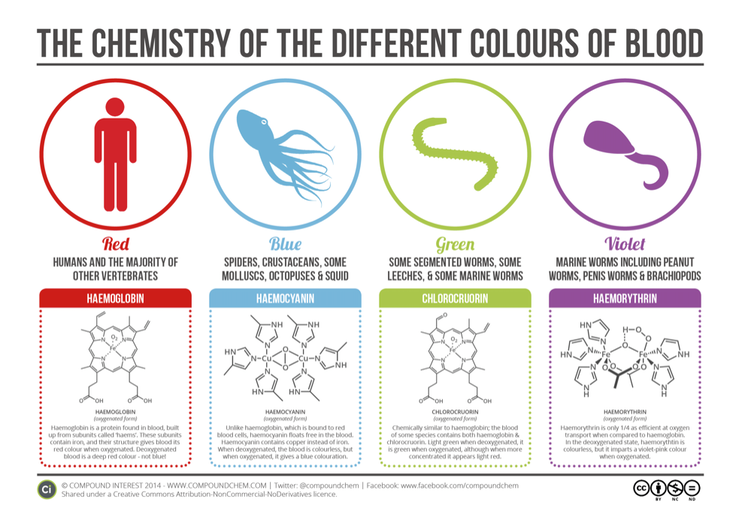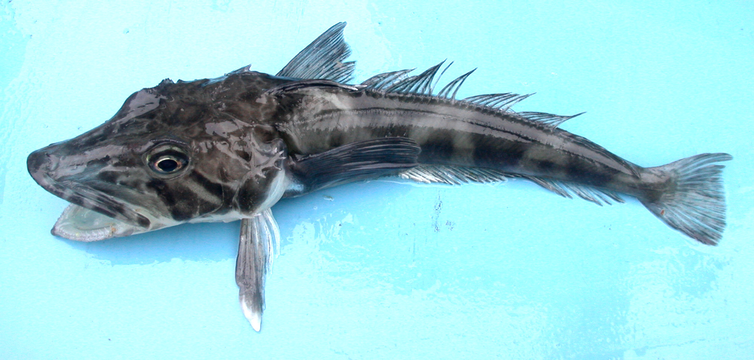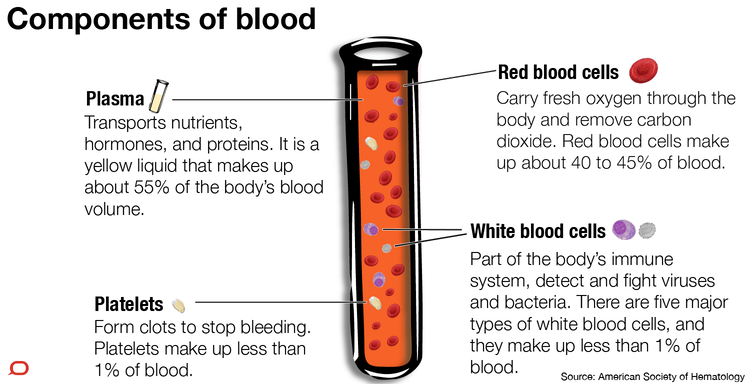Don’t have an account?
Select the donation type you’d like to make
Essays on blood: why do we actually have it?
This article is republished from The Conversation under a Creative Commons license. Read the original article.
Just as a village can’t grow into a city without some form of transport (road, rail or river) that provides necessary interconnections for it to flourish, living things are limited in the size they can reach unless they have some form of circulatory system to transport nutrients and remove waste.
Single celled organisms such as bacteria and fungi, and some multicellular creatures such as sponges, corals and flatworms, simply absorb the nutrients they need and get rid of their waste using a passive process known as diffusion (which is much like soaking in and draining out).
More complex animals have developed some kind of circulatory system. A variety of different systems and pumps (hearts) have developed, but they all have a few things in common. These include something to carry oxygen around their bodies, a fluid of some sort, and some “plumbing” – in humans (and a number of other species) the fluid is called blood and the plumbing is our arteries, veins and capillaries. The oxygen carrier is haemoglobin.
Depending on the organism and where it has adapted to live, its oxygen carrier can come in different forms, often giving its “blood” different colours. Spiders, crustaceans, octopuses and squid use haemocyanin, which is based on copper and gives them blue blood. This carrier works well in low oxygen environments and in the cold.
Segmented worms and some leeches use an iron based carrier called chlorocruorin, which can appear either green or red, depending on its chemical environment. Vertebrates, including humans, use haemoglobin, which makes their blood red.
A truly special case is the Antarctic icefish, which lost its haemoglobin long ago as a result of a presumably random mutation. It has adapted though, and now survives by transporting oxygen that is simply dissolved in its blood. This is possible thanks to the cold conditions it lives in.

What is our blood made of?
Human blood, and that of all creatures with backbones (Antarctic ice fish excepted), is red. The colour comes from a chemical known as haem, which contains iron. It’s the iron that is the crucial ingredient for carrying oxygen. Oxygen is needed for our cells to burn sugars, fats and proteins in a controlled way. This provides us with the energy we need to live.
Outside our bodies, we know that when iron is exposed to oxygen, it rusts. And it doesn’t easily “unrust”. But to work as an oxygen carrier in our bodies, iron needs to “rust” and “unrust” on demand - picking up oxygen where it is in plentiful supply (our lungs), and releasing it where it is required (the cells in our organs).
This on/off oxygen switch is made possible with help from complex larger molecules. The first is haem, a flat ring structure that holds an iron atom at its centre. Haem is held closely by proteins known as globin, and this combination forms haemoglobin, which is itself packaged up in red blood cells to be transported around the body.
Infographic - From animal experiments to saving lives: a history of blood transfusions
The molecular structure of haemoglobin is delicately tuned to allow it to bind oxygen in the lungs and drop it off in areas where there is less oxygen available.
Red cells are specialised parcels, lacking DNA, that are able to squeeze through the tiniest capillaries, down to four millionths of a meter (equivalent to roughly half their diameter). Their donut shape maximises their surface area to make sure they can efficiently deliver oxygen, while keeping them small enough to fit through the smallest blood vessels.

More than just the red stuff
As well as red cells, our blood contains other cells and chemicals that repair and maintain the transport system and send signals around the body.
White blood cells, also known as leukocytes, repel or destroy invaders. Some white blood cells (lymphocytes) manufacture molecules known as antibodies that tag viruses and bacteria for destruction, while others called neutrophils and macrophages (literally “big eaters”) engulf bacteria, fungi and parasites to keep our circulation clean. When neutrophils have done their job you sometimes might see them as the main component of pus.
Platelets are very small fragments of larger cells called megakaryocytes. They react to any breaches to the walls of blood vessels, gathering together and triggering reactions that form a plug (or a clot) for the damaged section. If a person doesn’t have enough platelets, they can suffer from uncontrollable bleeding.

The Conversation, CC BY-ND
Where does it come from?
All blood cells (red cells, white cells and platelets) develop from haematopoietic (literally meaning “blood-making”) stem cells, located in the bone marrow. It has recently been found that many platelets are made in the lungs, from megakaryocytes that have migrated there from the bone marrow.
As stem cells develop, they progressively specialise into the many different types of blood cells, making developmental choices along the way. The specialisation of cells during development is tightly controlled by a symphony of growth factors. In some types of blood cancers and serious diseases, stem cell or bone marrow transplants can be used to “reboot” the blood making system.
As our knowledge of the control of blood cell development grows, we’re making progress towards being able to reproduce this process in cells grown in the laboratory. This is still some time away from being a broadly available process, but an exciting area to watch as it develops.



